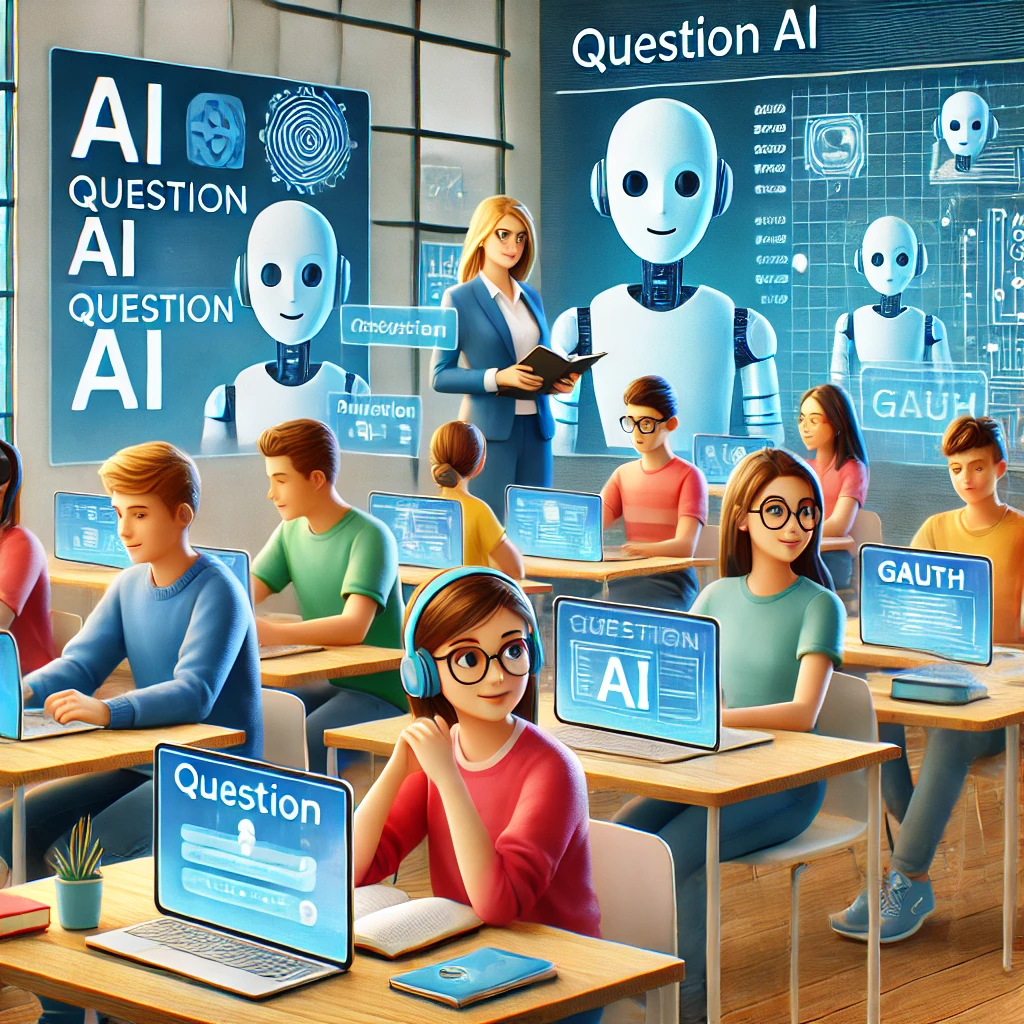Introduction
The integration of artificial intelligence (AI) into education is transforming the way teachers and students interact with learning materials and assessments. Teachers are using AI to grade essays, raising ethical concerns. As AI continues to evolve, its role in education becomes increasingly complex, particularly in the context of grading and providing feedback. While AI tools offer numerous benefits, including efficiency and personalized instruction, they also pose significant ethical and practical challenges.
In this blog post, we will delve into the use of AI in grading, the benefits and concerns associated with its adoption, and the policies that are being developed to guide its use. We will explore how AI is reshaping education, the impact on students and teachers, and the importance of transparency and consent in using these technologies. This discussion will include external references and scientific insights to provide a comprehensive understanding of the topic.
The Rise of AI in Grading
Teachers and AI Grading: Ethical Concerns
Teachers are using AI to grade essays, raising ethical concerns. The automation of grading tasks can significantly reduce the workload for educators, allowing them to focus on more interactive and personalized aspects of teaching. However, the use of AI for grading also brings up questions about fairness, accuracy, and the potential for bias. AI algorithms may not fully understand the nuances of student writing, leading to concerns about the validity of AI-generated grades.
Moreover, the lack of transparency in how these AI systems work can further exacerbate these ethical issues. Students and teachers alike may find it challenging to trust a system that operates as a “black box,” where the decision-making process is not clearly understood. This lack of transparency can undermine the credibility of AI tools in education.
Student Use of AI Tools
Students are also using AI tools like ChatGPT and Microsoft CoPilot to write essays. These AI-powered platforms can provide students with instant assistance in generating ideas, structuring their essays, and even proofreading their work. While this can enhance the learning experience and improve writing skills, it also raises concerns about academic integrity and plagiarism.
The ease of access to AI writing tools can tempt students to rely too heavily on these technologies, potentially bypassing the critical thinking and creative processes that are essential to writing. Educators need to find a balance between encouraging the use of AI for learning and ensuring that students develop their own skills independently.
AI Reshaping Education
Automation and Personalized Instruction
AI is reshaping education by automating tasks and providing personalized instruction. The use of AI in education extends beyond grading to include adaptive learning platforms that tailor instructional content to individual student needs. These platforms use data analytics to identify areas where students struggle and adjust the curriculum accordingly, providing a more personalized learning experience.
The percentage of faculty members using AI tools grew to 22% in fall 2023. This increase reflects the growing acceptance and integration of AI in educational settings. Teachers are leveraging AI to create more dynamic and interactive classrooms, where technology enhances traditional teaching methods rather than replacing them.
Policy Gaps in AI Use
Some schools have policies on student AI use but lack guidelines for teachers. This discrepancy highlights the need for comprehensive policies that address the use of AI by all stakeholders in the educational ecosystem. While students may face restrictions on how they use AI tools to ensure academic integrity, teachers also need clear guidelines to navigate the ethical implications of using AI for grading and instruction.
Developing robust policies for AI use in education requires collaboration between educators, administrators, and policymakers. These policies should emphasize transparency, accountability, and the ethical use of AI to ensure that it benefits all participants in the educational process.
The Effectiveness of AI in Grading
Limitations of AI Grading
Using AI solely for grading may not be effective in education. While AI can efficiently grade multiple-choice questions and other forms of objective assessments, it struggles with subjective evaluations that require a deep understanding of context and content. Essays, for example, involve complex ideas, creativity, and personal expression that AI algorithms may not fully capture.
AI can be beneficial for grading declarative knowledge but personalized grading is important. Declarative knowledge refers to facts and information that can be easily quantified and assessed by AI. However, for more nuanced assessments, human judgment remains crucial. Personalized feedback from teachers helps students understand their strengths and weaknesses, fostering a deeper learning experience.
Ethical Concerns and AI Grading
Some educators have ethical concerns about using AI to grade papers. The potential for bias in AI algorithms is a significant issue. If AI systems are trained on biased data, they may perpetuate those biases in their grading. This can disadvantage certain groups of students and lead to unfair outcomes.
Universities are working on policies for AI use in education to address these concerns. By establishing clear guidelines and ethical standards, educational institutions can mitigate the risks associated with AI grading. These policies should ensure that AI tools are used responsibly and that their limitations are acknowledged.
Transparency and Consent in AI Grading
Importance of Transparency
Transparency and consent are important when using AI tools for grading. Students and parents need to be informed about how AI systems work, what data they use, and how decisions are made. This transparency builds trust and ensures that all parties understand the role of AI in the educational process.
Educators should also be transparent about their use of AI tools and provide opportunities for students to give feedback. This collaborative approach helps identify potential issues and improves the implementation of AI technologies in the classroom.
Ensuring Informed Consent
Informed consent involves providing clear and comprehensive information about the use of AI in grading and obtaining agreement from students and parents. This process ensures that everyone involved is aware of the benefits and limitations of AI tools and can make informed decisions about their use.
Educational institutions should develop consent forms and informational materials that explain how AI systems work, their purpose, and the potential implications for students. By promoting informed consent, schools can foster a more ethical and transparent use of AI in education.
The Future of AI in Education
Advancements in AI Technology
The future of AI in education is promising, with ongoing advancements poised to further enhance the learning experience. From AI-powered adaptive learning systems to virtual reality classrooms, the potential applications of AI in education are vast and varied. These technologies can provide immersive and interactive learning experiences that go beyond traditional methods.
For example, the use of platforms like ChatGPT can facilitate personalized instruction and feedback, while tools like Microsoft’s CoPilot can assist with writing and research tasks. These advancements highlight the potential of AI to transform education and improve learning outcomes.
Addressing Challenges and Concerns
While the integration of AI in education offers numerous benefits, it’s important to address the challenges and concerns associated with its use. Ensuring data privacy and security, maintaining the quality of AI-generated content, and preventing the misuse of AI tools are some of the critical issues that need to be addressed. Additionally, educators and policymakers must work together to develop guidelines and best practices for the ethical use of AI in education.
By addressing these challenges and leveraging the potential of AI technologies, we can create a more inclusive, engaging, and effective educational environment that benefits learners of all ages.
Conclusion
The integration of AI in education is transforming the way we learn, making education more personalized, accessible, and engaging. From AI tutors to generative AI systems, these technologies are enhancing both traditional and lifelong learning experiences. By embracing AI and leveraging its potential, we can create a more dynamic and effective educational landscape that caters to the diverse needs of learners.
However, it’s important to strike a balance between leveraging AI for its benefits and ensuring that students still engage deeply with the material. By following guidelines and fostering thoughtful conversations about AI and education, we can ensure that these technologies are used ethically and effectively.
In summary, the future of education is bright with the integration of AI, and its potential to enhance learning experiences is vast. As we continue to explore and embrace these advancements, we can look forward to a more innovative and inclusive educational environment.



